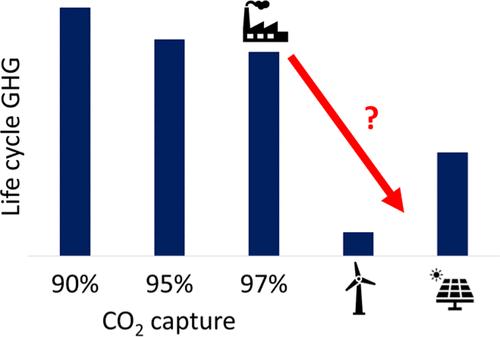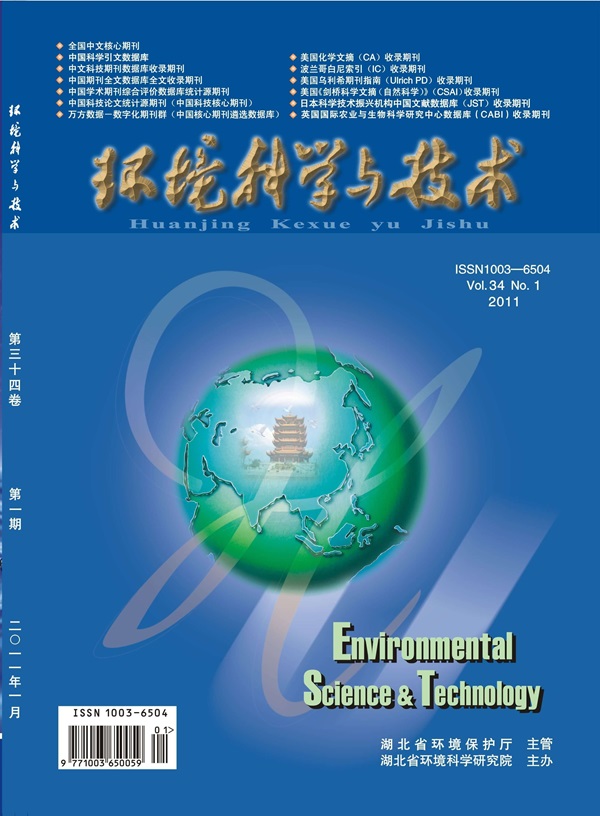Assessing Best Practices in Natural Gas Production and Emerging CO2 Capture Techniques to Minimize the Carbon Footprint of Electricity Generation
IF 10.8
1区 环境科学与生态学
Q1 ENGINEERING, ENVIRONMENTAL
引用次数: 0
Abstract
Natural gas (NG) is expected to provide a substantial portion of electricity generation in many jurisdictions for the foreseeable future. Postcombustion carbon capture and storage (CCS) effectively abates direct CO2 emissions; however, indirect NG supply chain emissions in most jurisdictions are incompatible with climate change mitigation goals. This life cycle assessment evaluates specific opportunities to reduce the carbon footprint of combined cycle gas turbine (CCGT) generation with CCS using existing low-emission NG production practices, technologies, and processes combined with emerging CCS techniques to achieve high CO2 capture rates and mitigate startup emissions. We find baseload life cycle greenhouse gas (GHG) emission intensity ranges from 22 to 62 kgCO2e/MWh for 95–98.5% CO2 capture, within the range of published estimates for wind and photovoltaic power and considerably below prior estimates of CCGT with CCS. Low-emission NG production practices reduce other environmental impacts, which are dominated by combustion-related air pollution. We also show how interim solvent storage can effectively mitigate emissions from CCGT start/stop cycles. This work highlights the importance of mitigating both CO2 and methane emissions from NG supply chains and proposes a more nuanced discussion regarding the potential contribution of NG to the future energy supply. A surrogate model is provided to estimate life cycle GHG emissions for CCGT with CCS and user-input parameters.

评估天然气生产的最佳实践和新兴二氧化碳捕获技术,最大限度地减少发电的碳足迹
在可预见的未来,天然气(NG)预计将在许多地区的发电量中占据相当大的比例。燃烧后碳捕集与封存(CCS)可有效减少二氧化碳的直接排放;但在大多数地区,天然气供应链的间接排放与减缓气候变化的目标不符。本生命周期评估利用现有的低排放天然气生产实践、技术和工艺,结合新兴的碳捕集与封存技术,实现高二氧化碳捕集率并减少启动排放,评估了通过碳捕集与封存减少联合循环燃气轮机(CCGT)发电碳足迹的具体机会。我们发现,在二氧化碳捕集率为 95-98.5% 的情况下,基荷生命周期温室气体 (GHG) 排放强度范围为 22-62 kgCO2e/MWh,在已公布的风力和光伏发电估计值范围内,大大低于之前对采用 CCS 的 CCGT 的估计值。低排放 NG 生产实践减少了其他环境影响,主要是与燃烧相关的空气污染。我们还展示了临时溶剂储存如何有效缓解 CCGT 启/停循环产生的排放。这项工作强调了减少天然气供应链中二氧化碳和甲烷排放的重要性,并就天然气对未来能源供应的潜在贡献提出了更细致的讨论。本文提供了一个替代模型,用于估算带有 CCS 和用户输入参数的 CCGT 生命周期温室气体排放量。
本文章由计算机程序翻译,如有差异,请以英文原文为准。
求助全文
约1分钟内获得全文
求助全文
来源期刊

环境科学与技术
环境科学-工程:环境
CiteScore
17.50
自引率
9.60%
发文量
12359
审稿时长
2.8 months
期刊介绍:
Environmental Science & Technology (ES&T) is a co-sponsored academic and technical magazine by the Hubei Provincial Environmental Protection Bureau and the Hubei Provincial Academy of Environmental Sciences.
Environmental Science & Technology (ES&T) holds the status of Chinese core journals, scientific papers source journals of China, Chinese Science Citation Database source journals, and Chinese Academic Journal Comprehensive Evaluation Database source journals. This publication focuses on the academic field of environmental protection, featuring articles related to environmental protection and technical advancements.
 求助内容:
求助内容: 应助结果提醒方式:
应助结果提醒方式:


